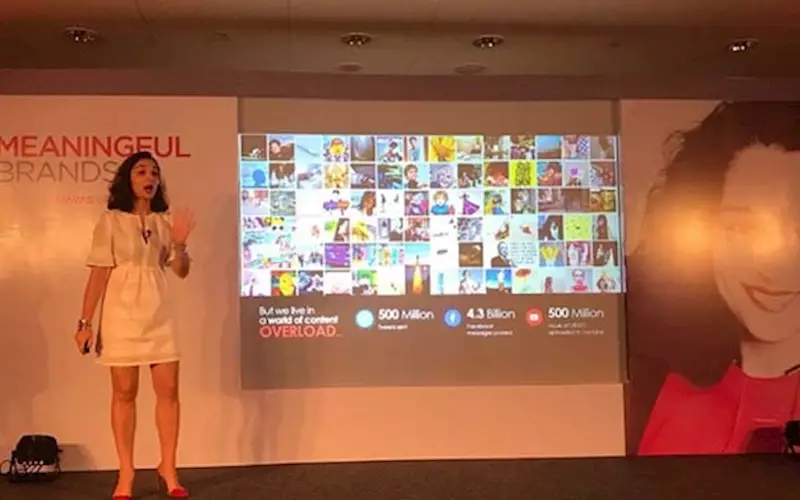"There is still hope for brands in India": Maria Garrido
The global chief insights and analytics officer at Havas Group explained why brands need to be meaningful
29 Nov 2017 | By PrintWeek India
Maria Garrido, global chief insights and analytics officer, Havas Group, was in Mumbai to deliver a ‘master class’ on meaningful brands.
Prior to her session, Vishnu Mohan, CEO, Havas Group India and Southeast Asia, took to the dais and gave an update on the agency. Along with an update on Mumbai getting the Havas Village early next year, he spoke about the importance the agency is giving to content.
He said, “As a group, we have moved from the communication industry to the media and entertainment one post being acquired by Vivendi. It has allowed us to play differently. We see the value of content for our clients. Our ability to leverage that helps. Vivendi as a group has Universal Music, Gameloft and Daily Motion active in India. We have production companies like Canal + globally that produce movies too.”
He added, “In the last 12 months, we have tried making sure we keep making investments too with acquisitions like Sorento in the healthcare space. Havas Group has seen that there is no value one can create unless there is an environment for data and content to be put together. That’s what Havas Village gives us. We’ll be doing that in Mumbai too by March by putting together our offices.” And with that, Mohan introduced, Maria Garrido, global chief insights and analytics officer, Havas Group for a Masterclass on ‘Meaningful Brands’.
Havas rolls out a ‘Meaningful Brand Study’ once a year. This year’s study surveyed 3,75,000 people. From these 16,500 were Indians.
She started her session by urging brands to be meaningful. She then raised a warning that brands shouldn’t be meaningful for the sake of it though.
She stated, “We now live in an organic world. We have 2.5 billion people connected through social and mobile platforms. Social media enables people to shape the world. Brands have to stand out.”
She then raised some points from the study on a global and India level:
• 74 per cent of the brands could disappear and people wouldn’t care.
• There is still hope for brands in India. Brand trust is weak globally, but still strong in India. It’s at 69 per cent. But this is starting to decline.
• 75 per cent people want more brands to be meaningful. The bad news is that people expect more from brands.
• 92 per cent Indian millennials want brands to go beyond functional benefits.
Garrido went on to define meaningful: “Go beyond the product exploring how brands tangibly explore peoples’ lives and the role they play in society.”
She added, “When brands are creating meaning, consumers are likely to share 9X of their wallet on such brands. In telecom, when brands are meaningful, there’s 83 per cent repurchase intent. Meaningful brands don’t need to be category leaders. But they still get preference.”
After which she revealed the industries which see the most meaningful brands in and the list of the top 10 most meaningful brands in India.
- YouTube
- Amul
- Microsoft
- Apple
- Amazon
- Cadbury
- Flipkart
Garrido said, “While providing a great product is a must-have for brands, they should look to excel in the personal benefits they give. Meaningful brands overperform on personal benefits.”
Content
The global chief insights and analytics officer at the group then spoke about the importance of content.
She stated that 84 per cent of the consumers expect brands to provide great content. “And that just can’t be uploading a TVC on social media. With everyone throwing out messages, there’s a bombardment of content. More than half of the content fails to reach people and adds to the clutter,” she said.
According to Garrido, the role of content should be to inspire, entertain, educate, inform, help or reward.
She ended by laying out the 10 most expected bits of content for the automobile and personal care industry.
This article was first published in Campaign India on 17 November 2017














 See All
See All